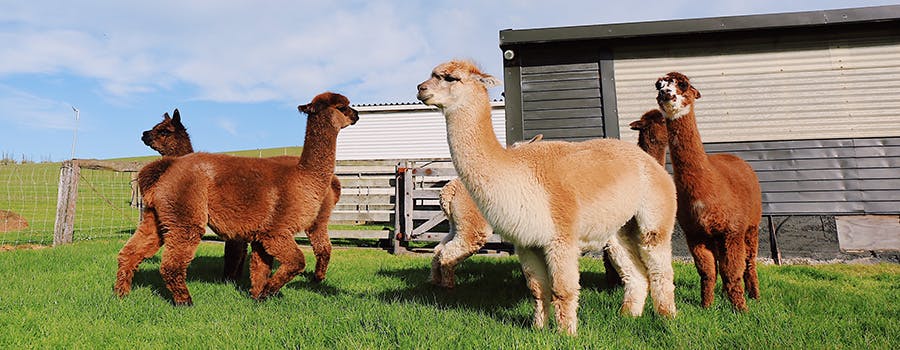Dogs with spotted tongues have a bit of extra pigmentation – which just makes them extra adorable! But which dog breeds are most likely to have black spots on their tongue? And should you ever be concerned about them? Let’s explore what you need to know about this phenomenon and look at the most common dog breeds with black spots on the tongue.
Trending posts
Purr-use some of the top blogs our members have been loving this month- Top male dog names for your new furry friendGot a new furry family member in your pack? Check…

- Top female dog names for your new fluffy palWelcoming a new pooch into your family? Explore…

- 250+ gray cat names your silver feline will loveRecently welcomed a fluffy gray bundle of joy into…

- What are normal pet sitting rates?Discover the average pet sitting rates for animals…

- Unique dog names to stand out from the packDare to be different with our list of the best…

Dog breeds with spotted tongues
While any breed of dog can have spotting on their tongues, some breeds are more likely to rock this feature. So what dogs have spotted tongues? These include:
- Chow Chow
- Chinese Shar-Pei
- Golden Retriever
- Eurasier
- Labrador Retriever
- Shiba Inu
- German Shepherd
- Cocker Spaniel
- Doberman Pinscher
- Great Pyrenees
- Rottweiler
- Akita
- Thai Ridgeback
- Collie
- Pomeranian
- Dalmatian
What causes black spots on a dog’s tongue?
Dogs with black on their tongue simply have a few extra deposits of melanin, the same pigment that colors their fur. In the same way humans have moles or freckles across their bodies, your furry friend may have some patches of pigmentation coloring their tongues! It’s totally normal and nothing to worry about.
Some breeds, like Chow Chows and Shar Peis, take it a step further by having a completely blue-black tongue. Black-tongued dog breeds inherit this trait.
Are black spots on a dog’s tongue ever a problem?
Most of the time, black spots on your dog’s tongue are just harmless pigmentation.
However, they may be cause for concern if the patches have appeared suddenly on a previously pink dog tongue, or if they’re growing rapidly. Normal black patches are flat and won’t affect the way your furry friend uses their tongue in any way.
Problematic signs include the areas of dark pigmentation becoming raised, inflamed, smelly, or painful. Oral melanoma is a type of cancer that can be dark in color due to the rapid replication of melanocyte cells, the cells that produce melanin. This means it’s extremely important to recognize when things don’t look right and react accordingly.
If your furry friend has a spotted tongue, monitor them and take them to your vet if you notice any changes you’re not happy about. You should also get your pet checked over if their tongue was previously pink but is now suddenly changing color.
Our trusted sitters are experienced in caring for pets and keeping an eye out for any unusual health concerns. You can rely on them to take care of your furry friend’s everyday needs and seek veterinary help if things don’t look quite right.
Meet our veterinary expert, Rebecca
This article has been written by veterinarian Rebecca MacMillan, BVetMed MRCVS. Rebecca is a companion animal vet who has always had a passion for writing and client communication. Since her graduation from the Royal Veterinary college in 2009 she has gained a wealth of experience in first opinion small animal practice, in both clinical and managerial roles. She currently works in the South West and deals with a variety of routine and emergency appointments, but particularly enjoys medicine cases. Outside of work and writing, she enjoys spending time with her family, including her bouncy flat coated retriever George!
Dog breeds with spotted tongues – FAQs
What dogs have black spots on their tongue?
Dog breeds with spotted tongues include Chow Chows, Shar-Peis, Labradors, Golden Retrievers, and German Shepherds. These spots are usually harmless and come from extra skin pigment.
What does an unhealthy dog tongue look like?
Red spots on a dog’s tongue can indicate there’s a problem with your pet. An unhealthy tongue might also be ulcerated, swollen, painful, or misshapen. A bad odor from your pet’s mouth, changes in appetite, or increased drooling are also clues that your dog’s tongue is unhealthy.
What do black spots on a cat’s tongue mean?
Black spots on a cat's tongue are also caused by extra pigmentation, just like in dogs. In cats, the nose and lips can also be affected, and this pigmentation is often known as lentigo. It’s most common in ginger, calico, and tortoiseshell cats. As long as the tongue looks otherwise normal – free from red spots or inflammation – your kitty should be fine.

